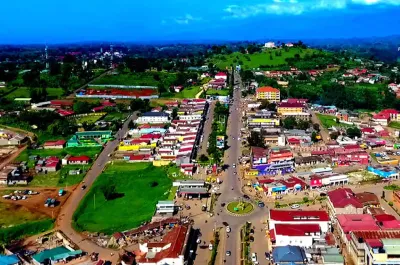
The Bank of Uganda (BoU) is advancing regulations designed to increase access to credit and help more Ugandans build reliable credit histories. David Kalyango, Executive Director of Supervision at BoU, said the goal is to ensure that “every Ugandan, no matter their type of work, can access credit to grow businesses, boost investments, and drive development.”
He made these remarks during the first Credit Data, Referencing and Innovation Symposium, organized by the Credit Reference Bureaus Association of Uganda (CRBA), under the theme “Strengthening and Scaling Uganda’s Credit Ecosystem through Data, Innovation and Partnerships.”
Expanding Access to Credit
Many Ugandans struggle to secure larger loans because they lack traditional collateral such as land or property. While SACCOs (Savings and Credit Cooperatives), mobile money, and digital lenders have increased access to small loans, larger credit remains difficult for many. BoU aims to address this by promoting data-driven credit assessments, which can better reflect a borrower’s capacity to repay loans.
Licensing Large SACCOs
- Under the Microfinance Deposit‑Taking Institutions (Registered Societies) Regulations, 2023, large SACCOs are now licensed by BoU.
- A SACCO is considered large if it holds voluntary savings above UGX 1.5 billion and has institutional capital over UGX 500 million.
- Licensed SACCOs gain access to deposit protection, improved governance, and participation in the credit reference bureau (CRB) system.
- Some SACCOs have already received licenses, including EBO SACCO and Kyazanga-Kwegatta, with more expected to join in the coming months.
Credit Data and Full-File Reporting
- The Financial Institutions Credit Reference Bureau Regulations, 2022 enable a wider range of lenders—including SACCOs, telecom lenders, and retailers—to share credit information.
- BoU is promoting full-file reporting, capturing both positive and negative credit information, to create comprehensive borrower profiles.
- The approach allows lenders to make fairer credit decisions, reduce over-indebtedness, and set more accurate interest rates.
Identification and Alternative Data
- The National Identification Number (NIN) is increasingly used in loan applications, simplifying verification and reducing onboarding costs.
- Other data sources, such as mobile-money transaction records, digital credit records, and group savings, are being integrated into credit assessments.
- This helps underserved groups like women, youth, informal traders, and small business owners demonstrate creditworthiness through trusted data.
Data Privacy and Protection
- All financial institutions participating in CRB reporting must comply with data protection standards, obtain borrowers’ consent, and ensure privacy safeguards are embedded in their systems.
Broader Vision
BoU’s efforts reflect a shift from traditional, collateral-based lending toward a data-driven credit ecosystem. The goal is to give more Ugandans access to loans, support business growth, and drive economic development, while ensuring that borrowers are evaluated fairly based on their financial behavior rather than just asset ownership.














Sunrise reporter
Leave a Comment
Your email address will not be published.